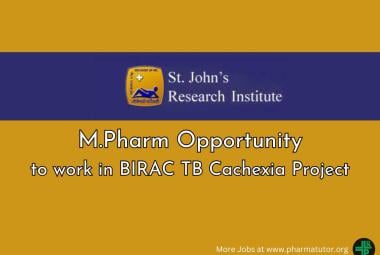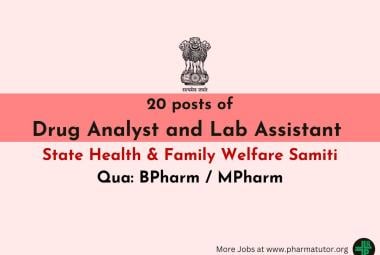{ DOWNLOAD AS PDF }
ABOUT AUTHORS:
*Daya L. Chothani1, N. M. Patel2
1B. K Mody government pharmacy college, Rajkot, Gujarat, India
2Sri B.M. Shah College of Pharmacy, Modasa, Gujarat, India
daya.herb@gmail.com
ABSTRACT
The aim of present study was to carry out pharmacognostic and physicochemical evaluation of fruits of Gmelina arborea. Fresh fruits and dried powder of the fruits were studied by morphology, microscopy, qualitative chemical test and florescence analysis of powdered drug. Other physicochemical parameters were also performed as per WHO guide lines. The detailed microscopy revealed the presence of stone cells, vascular strand and pitted parenchyma. Physicochemical parameters and florescence analysis were also studied. The preliminary phytochemical screening showed the presence of alkaloids, proteins, saponins, sterols, phenolic compounds and carbohydrates. The result of these studies could be useful for identification and standardization of Gmelina arborea fruits.
INTRODUCTION
Gmelina arborea Roxb. belongs to family Verbenaceae,widely distributed in India, Ceylon, Malaya and Philippine Island. In Ayurveda, fruits are acrid, sour, bitter, sweet, cooling, diuretic, tonic and aphrodisiac. It promotes hairs growth, used in ulcers, anemia and leprosy. Fruits are reported butyric acid, tartaric acid, and saccharine substances. Chakradatta gave ripe fruits with honey for checking hemorrhage. Ripe fruits dried and cooked with cow’s milk, for urticaria. Fruits used in dysuria, hemorrhagic disease.[1-6] The fruits are reported hepatoprotective,[7] antibacterial, antioxidant and antidiabetic activity.[8]The current study was carried out to provide pharmacognostic details, physico-chemical and phytochemical analysis of fruits of Gmelina arborea.
MATERIAL AND METHODS
Plant material
Fresh fruits of G. arborea were collected from Vadodara in the month of May-June 2011. Plant was identified and authenticated by Dr. P. S. Nagar at Botany Department of The M. S. University, Vadodara. Voucher specimen (DC-GM-1) was stored in herbarium of our laboratory. Fruits pericarps were separated dried under shade and powdered.
Reagent and Chemicals
All the chemicals and reagents used were of analytical grade, purchased from Sigma chemical co. (St Louis, MQ, USA) and Merck (Darmstadt, Germany).
Pharmacognostic study
Fruits were subjected to morphological examinations. Microscopic evaluation of fruit was carried out by taking the transverse sections using standard procedures[9-11] and then subjecting them to microscopic examination. The powdered samples were also subjected to histological examinations using standard procedures and their diagnostic features were identified and recorded and observed under Zeiss microscope using Mips Olympus camera (Magnification 10X and 40X). The section was stained withphloroglucinol and hydrochloric acid. Different diagnostic features were identified and reported in the results.
Fluorescence analysis
The fluorescence nature of powder drug was analyzed[12] and the observations with different chemicals were also carried out and recorded.
Physicochemical evaluation of fruits of Gmelina arborea
The various physicochemical properties like water soluble extractive value, alcohol soluble extractive value and loss on drying) were determined as per WHO guidelines. [13]
Phytochemical screening [14-15]
A 20 g of pericarps powder was macerated with methanol and water for 24 hrs. The extracts were filtered and concentrated by distilling the solvent and the extracts were dried under reduced pressure. Consistency, color, appearance of the extracts and their percentage yield were noted. The extracts were then subjected to various qualitative chemical tests to determine the presence of various phytoconstituents.
RESULTS AND DISCUSSION
Morphological study: Morphological character of fruits and seed reported and compared with reported character in Fig-1.
Seed: They are exalbuminous, Oblong , Light brown colored, oily Taste, Characteristic odor and having size 0.7-0.9 cm length 0.2-0.5 cm width, 0.1- 0.2 cm thickness.
Fruits: Fruits are drupe with calyx, Dark green color when unripe, yellow when ripe and Black when dried, Obovoid or pyriform,1.9- 2.5 cm length and 1.2-1.5 cm width, smooth glossy surface, base; Cordate, odour; Characteristic, strong and disagreeable, exocarp;succulent and aromatic, endocarp, bony and usually 2-4 celled.

Fig.1 Morphological characteristics of dried fruits, kernels, seed and ripe fruits of G. arborea
Microscopical evaluation
Microscopical characteristics of fruits:
Fruit pericarp is differentiated in to epicarp, mesocarp and endocarp. Epicarp is made up of single layered cells. Mesocarp is fleshy and multilayered made up of parenchymatous cells. Outer portion of mesocarp is made up of isodiametric or oblong parenchymatous cells while inner portion of mesocarp is made up of thin walled elongated cells. Vascular strand and sclereid was also observed. Endocarp is hard, made up of sclerenchymatous tissue.

Fig. 2 Microscopical characteristics of G. arborea fruits pericarp (Excluding endocarp)
Fruits powder characteristics: It is dark brown color, acid taste and characteristic odor. Fruits powder microscopical characteristics are reported in Fig 3.

Fig. 3 Microscopical characteristicsof fruits powder of G. arborea
Fluorescence analysis
Table 1 Fluorescence analysis of powder G. arborea fruits with various reagents
|
Reagents |
Visible light |
U V light (254nm) |
|
Drug powder as such |
Brownish |
No Fluorescence |
|
Powder +5 %NaOH (aqueous) |
Light Brownish |
Light yellow Greenish |
|
Powder + 5 % NaOH (aqueous) |
Light yellow |
Golden Yellowish-green |
|
Powder + Hydrochloric acid |
Light reddish brown |
Light green brown |
|
Powder + Sulfuric acid |
Reddish brown |
Brownish red |
|
powder + Nitric acid |
Light yellowish-brown |
Greenish yellow |
|
Powder + Acetic acid |
Light brown |
Yellow green |
|
Powder + NH3 |
Dark brown |
Brownish |
|
Powder + Water |
Light brown |
Light yellowish brown |
|
Powder + Alcohol |
Light reddish brown |
Light yellowish brown |
Physico-chemical constant:
The physicochemical constants are reported in table 5.The values given here are expressed as percentage of air dried material. Each value is average of three determinations.
Table 2 Physicochemical parameter of fruits of Gmelina arborea
|
Parameter |
% w/w (n=3) |
|
Foreign matter |
0.8 % |
|
Total Ash |
5.35 % |
|
Acid-insoluble ash |
0.25% |
|
Alcohol-soluble extractive |
28.2% |
|
Water-soluble extractive |
35.3 % |
|
Loss on drying |
8.0 % |
Phytochemical screening: Methanolic extract showed the presence of alkaloid, sterols, proteins saponins, carbohydrates and phenolic compounds.
Herbal medicines have been used for thousands of years. Medicinal plants are important sources for pharmaceutical manufacturing. Medicinal plants are widely used in pharmaceutical market. Quality, safety and efficacy of herbals drugs are most important criteria for herbal dug industry. Standardization of herbal drugs is a very challenging task for herbal drug industry because of complex nature and variation of chemical constituents. Microscopical evaluation is a one of the simplest method for identification of drugs. 14-15 There is no pharmacognostic work reported on fruits of this plant. So the present work was undertaken for development of pharmacognostic standard of fruits of G. arborea.
CONCLUSION
Phytochemical study showed that the presence of secondary metabolites like alkaloid, phenlolic compound and saponin. Physicochemical studies revealed the presence of total ash; 5.35%, acid insoluble ash; 0.25%, alcohol soluble extractive; 28.2% and water soluble extractive; 35.3 %. The pharmacognostic and phytochemical parameter established in the present study could be useful in identification and preparation of monograph of fruits of Gmelina arborea.
Conflict of interest statement
We declare that we have no conflict of interest.
ACKNOWLEDGMENT
The authors are grateful to pioneer Pharmacy College, Vadodara and B. K. Mody government pharmacy college, Rajkot for providing necessary equipments to complete this research work. Authors also acknowledge Dr. P. S. Nagar in collection and authentication of plant.
REFERENCES:
1.Kirtikar KR, Basu BD. Indian Medicinal Plants. 2nd edn, Dehradun; India, 1975; 2, p.1932-40.
2.Chothani DL, Vaghasiya HU, Patel NM. A review on Gmelina arborea Roxb. (Gambhari) traditional uses, phytochemical constituents, pharmacological activity, marketed formulation. Inventi Rapid: Ethnopharmacology 2011; 2(1), Available at inventi.in.
3.Khare CP. Indian herbal remedies: rational Western therapy, ayurvedic, and other traditional usage, botany. Springer, 2004: 236.
4.Khare CP. Indian Medicinal Plants: An Illustrated Dictionary, Springer; 2007: 291.
5.Pandey CN. Medicinal plants of Gujarat. Gujarat, India: Gujarat Ecological Education and Research Foundation, 2005:190
6.Asolkar LV, Kakkar KK and Chakre OJ. Second Supplement to Glossary of Indian Medicinal, 1992: 217.
7.Sinha S, Dixit P, Bhargava S, Devasagayam T.P.A and Ghaskadbi S. Bark and Fruit Extracts of Gmelina arborea. Protect Liver Cells from Oxidative Stress. Pharmaceutical Biology 2006; 44 (4) :237-243.
8.Nayak BS, Ellaiah P, Dinda SC. Antibacterial, antioxidant and antidiabetic activities of Gmelina arborea roxb fruit extracts. Int J Green Pharm 2012; 6:224-30.
9.Kumar D, Jyoti G, Kumar S, Renu A, Kumar T, Ankit G. Pharmacognostic evaluation of Cayratia trifolia (Linn.) leaf. Asian Pac J Trop Biomed 2012; 6-10.
10.Essiett UA, Bala DN and Agbakahi JA. Pharmacognostic Studies of the Leaves and Stem of Diodia scandens Sw in Nigeria. Arch Appl Sci Res 2010; 2 (5): 184-198.
11.Kumar S, Kumar V, Prakash OM. Pharmacognostic study and anti-inflammatory activity of Callistemon lanceolatus leaf. Asian Pac J Trop Biomed 2011; 1(3): 177-181.
12.Jegede IA, Ibrahim JA and Kunle OF. Phytochemical and pharmacognostic studies of the leaf and stem-bark of Anthocleista vogelii (Planch). Journal of Medicinal Plants Research 2011; 5(26): 6136-6139.
13.WHO. Quality control methods for medicinal plant material. Geneva: WHO; 1992: 22-34.
14. who.int/mediacentre/factsheets/fs134/en/
15.Chothani DL, Patel NM. Preliminary phytochemical screening, pharmacognostic and physicochemical evalution of leaf of Gmelina arborea. Asian Pac J Trop Biomed 2012; S1333-S1337.
REFERENCE ID: PHARMATUTOR-ART-2198
|
PharmaTutor (ISSN: 2347 - 7881) Volume 2, Issue 7 Received On: 01/05/2014; Accepted On: 05/05/2014; Published On: 01/07/2014How to cite this article: DL Chothani, NM Patel; Pharmacognostic and Physicochemical Evaluation on Fruits of Gmelina Arborea; PharmaTutor; 2014; 2(7); 162-166 |
NOW YOU CAN ALSO PUBLISH YOUR ARTICLE ONLINE.
SUBMIT YOUR ARTICLE/PROJECT AT articles@pharmatutor.org
Subscribe to Pharmatutor Alerts by Email
FIND OUT MORE ARTICLES AT OUR DATABASE









